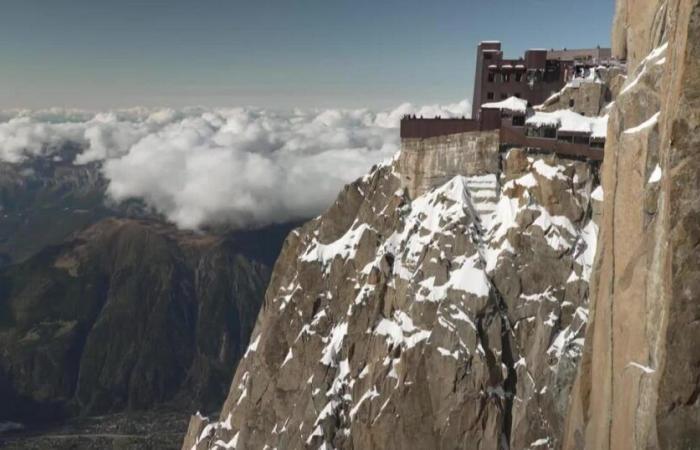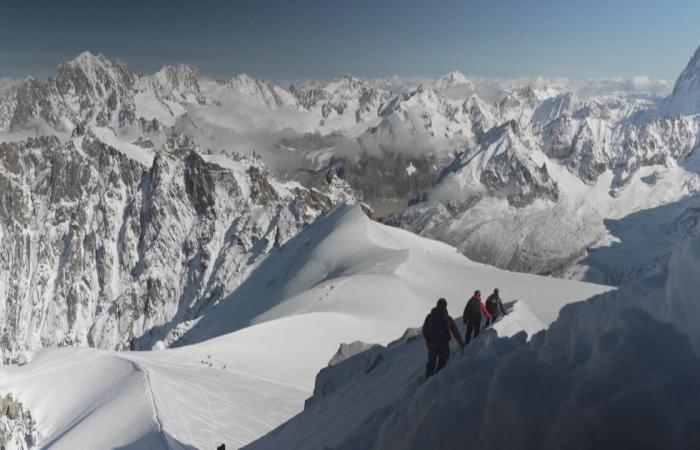The documentary “Kaizen”, retracing the ascent of Everest by YouTuber Inoxtag, has sparked an unexpected enthusiasm for mountaineering and surpassing oneself. From Chamonix to social networks, the phenomenon goes far beyond the mountain setting.
Winter is slowly settling in on the peaks of Chamonix. However, the crowds remain high at the Aiguille du Midi. Among French-speaking visitors, one name keeps coming up: Inoxtag.
“It’s a source of motivation for all young people,” confides a tourist interviewed by the program Mise au Point. “It could include everyone,” he adds, referring to the documentary “Kaizen” which traces the ascent of Everest by this 22-year-old YouTuber.
>> Read also: “Kaizen”, the phenomenon documentary on the ascent of Everest by YouTuber Inoxtag
A dazzling success
Broadcast for free on YouTube, “Kaizen” broke all audience records for a video in French. In just 24 hours, the film has accumulated 15 million views. Today, this figure reaches 37 million.
We noted an increase in calls from parents who came to inquire about high mountain activities for their children aged 15-18.
The documentary tells the story of how Inès Benazzouz, aka Inoxtag, went from being a gamer to being an experienced mountaineer. A transformation that fascinates well beyond mountain enthusiasts.
A concrete impact on the ground
In Chamonix, the effect is felt even in the offices of the prestigious Compagnie des Guides. Didier Tiberghien, its director, testifies: “We noted an increase in calls from parents who came to inquire about high mountain activities for their 15-18 year old children.”
Faced with this unprecedented demand, the bicentennial institution had to adapt. “We made changes to our website to specify which activities were accessible to minors,” explains Didier Tiberghien.
Beyond mountaineering
Mathis Dumas, the guide who accompanied Inoxtag to the summit of Everest, emphasizes the film’s broader message: “For us, it was really important to inspire people to find their own Everest, whether it’s whether sporty or not.”
This cleared my head a little by telling me that maybe we need to put down our phones more and enjoy more of what we have in real life.
This message seems to have resonated well beyond the usual audience for Inoxtag videos. Christina, a 43-year-old mother living near Vevey, has set herself the goal of reaching a summit of more than 4,000 meters next summer. “This film reassured me that anything was possible,” she explains.
An unexpected impact on young people
Paradoxically, it is not so much the sporting feat that marked many adolescents, but rather that of leaving the screens for a long period. Kiera, 17, a school dropout, notes: “It cleared my head a little, telling me that maybe we need to put down our phones more and enjoy more what we actually have.”
For Matteo, 16, who like Kiera is taking part in a three-day nature course, the challenge now is to reduce his screen time: “Before, I spent around 25 hours a week on screens. Now it’s It’s reduced to 12-13 hours I think.”
![More and more young people are showing interest in outdoor activities. [RTS] More and more young people are showing interest in outdoor activities. [RTS]](https://euro.dayfr.com/content/uploads/2024/11/11/301f1db4d7.jpg)
A phenomenon that divides
Laetitia Bourquin, organizer of the stay in the countryside, also sees the phenomenon in a positive light: “When I see the impacts that it has on young people, I defend the film. I find what is happening quite beautiful.”
But while the enthusiasm is palpable, some remain skeptical. “You learn the mountains gradually. It can’t be done in a few weeks with a guide,” worries a resident of Chamonix.
The future will tell if this craze for surpassing oneself and reconnecting with nature will last. But one thing is certain: Inoxtag has managed to strike a chord with many young people, well beyond its usual community of fans.
TV subject: Christophe Ungar
Adaptation web: vkiss








